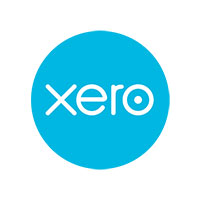
With your tax return filed for 2013/14, it is time before the end of the tax year on 5 April, to undertake an annual review of your financial affairs to check if you are paying more tax than you need to and whether the structures you set up in the past are still appropriate.
In this blog and the following blogs we look at a number of relatively simple tax planning ideas, involving the use of a number of reliefs.
These are general planning ideas. Please do contact us, if you would like specific advice or more information.
Individual tax
Maximise your NISA
Most people need to save for something: university fees, retirement, house repairs, or just an ‘emergency fund’. For a long-term goal, a pension scheme may be the best vehicle. New Individual Savings Accounts (NISAs) give shorter-term access to your money as well as tax breaks.
Each UK resident adult can deposit up to £15,240 in a NISA from 6 April 2015 (limit was £15,000 from 1 July 2014). The investments in the NISA can be held in stocks and shares, or in cash, in any proportion you determine. Income and capital gains arising in any kind of ISA are tax-free.
A person aged 16 or 17 can open a cash ISA, investing up to £15,240 in 2015/16 (£15,000 for 2014/15). Beware of making significant contributions to your child’s ISA if they are still under 18, because if you provided the funds and the interest exceeds £100 p.a., that will count as your taxable income, not your child’s tax-free income.
A ‘Junior ISA’ can be opened for any UK resident child aged under 18 if they don’t have a Child Trust Fund (CTF) account. Anyone, even the parents, can deposit up to £4,080 into the child’s junior ISA in 2015/16 (£4,000 for 2014/15) without tax charges. From 6 April 2015 it will be possible to transfer funds from a CTF to a Junior ISA.
You can switch your savings between different NISA providers, if you ask the manager to do this for you.
Watch the tax cliff edges
When your total income reaches certain thresholds it tips any extra income into a band where a higher rate of tax is charged. This can happen at some unexpected points due to the withdrawal of allowances or the claw-back of benefits.
If your total income in this tax year or the next year is expected to hover around one of cliff edges, you could save money by moving income or deductions from one year to the other.
For example, if you are a 20% taxpayer in 2014/15, but expect that a bonus in March 2015 will tip you into 40% tax for this year, you could ask your employer to postpone the bonus payment to after 5 April 2015. You’ll pay the tax on that income later, and you may stay out of the 40% band as the 40% threshold will be higher for 2015/16.
If your income falls in the band in which your personal allowance is withdrawn (£100,000 to £120,000), your marginal income tax rate is effectively 60%, plus 2% national insurance. For child benefit clawback the marginal rate can be much higher, depending on the amount of benefit received. This makes the tax saving on shifting income or deductions even more valuable.
Income that can easily be moved from year to year includes:
- bonus or salary from your own company
- dividends from your company
- distributions from discretionary trusts
It’s also possible to adjust the timing of deductions for Gift Aid charity donations or pension contributions from year to year, as these can increase the value of a threshold that tips you into the higher tax rate.
Give and save
Giving to charity can result in a win/win for both the donor and the charity where the gift is made under Gift Aid.
A Gift Aid donation will reduce the tax payable for the year in which the gift is made, but it is possible to shift that tax benefit back a year. This can only apply if the gift precedes the filing of the tax return for that earlier year. For example, a gift made on 31 October 2015 can reduce the 2014/15 tax liability which is due on 31 January 2016, if the 2014/15 tax return is submitted after 31 October 2015.
Gift Aid can also reduce your income used to calculate the clawback of child benefit (income over £50,000) and the reduction in personal allowances (income over £100,000). Gift Aid doesn’t affect the cap on setting losses against other income (income over £200,000). To avoid the loss relief cap, advancing a pension contribution may be a better option.
Giving quoted shares or land produces both income tax and capital gains tax (CGT) reliefs. Say you give shares worth £50,000. This generates an income tax reduction of £20,000 (for a 40% taxpayer). If the shares would otherwise produce a taxable gain on disposal of say £16,000 (after your CGT annual exemption), you can also save CGT at 28%, that’s £4,480. So the charity receives £50,000 for a cost to you of only £25,520.
Families
In the UK everyone is taxed as an individual, but social security benefits are awarded on the basis of the family’s income. This is contradictory and confusing, but we have to live with the law as it is.
The result is that families with an unequal distribution of income will often pay more tax than couples who earn enough each to cover their basic personal allowance (£10,000 for 2014/15) and basic rate band (£31,865 for 2014/15).
Consider the Browns, who are married with two children and claim child benefit. In 2013/14 George Brown earns £80,000 and Sally Brown has no income. After paying tax and NI of £26,636 the family has net income of £53,364. However, as George’s income is over £60,000, the child benefit of £1,752 is clawed back as a tax charge, making their net income £51,612. As an alternative to the child benefit tax charge, Sally can ask HMRC not to pay her the child benefit, but to keep her claim ‘live’ so she receives NI credits that count towards the state pension.
In 2014/15 the Browns both work part-time, each earning £40,000, just below the higher rate threshold. After paying tax and NI of £9,845 each, the family takes home £60,310, but as neither parent has income above £50,000, they keep the child benefit of £1,770.
These examples show that it makes sense to transfer some income from the higher earner to the lower earner in order to take advantage of the tax-free allowance and lower-taxed slices of income. This is not always easy to do, but the following methods are possible:
- an outright gift of savings and investments which produce taxable income;
- putting savings and investments into joint names and sharing the income;
- employing the spouse or partner in a business;
- taking the spouse or partner into partnership.
HMRC can challenge some of these if they think the transfer is not genuine – it’s important to take advice to be sure that the plan will work.
Letting a room
Many people earn a little extra money by letting a room in their own home to a lodger or guest for short or long periods. There are also websites that allow home-owners to let rooms by the day or week to tourists.
If you earn money this way you should declare any profit you make on your annual tax return. However, you can take advantage of rent-a-room relief to exempt from tax the first £4,250 you receive as rent in each tax year. Where more than one person receives the rent, each person has a tax free exemption for rent of £2,125.
The rent must be for a room in the home you also occupy, and it must be let as residential accommodation, not as an office or for storage.
Capital Gains
Most people have an annual exemption for capital gains tax (CGT) of £11,000 (£11,100 for 2015/16). This is wasted if you don’t make capital gains in the tax year. You can’t transfer any part of your unused exemption to a different tax year or pass the benefit of it to another person.
Say you pay income tax at 40% and you make a gain of £66,000. After your annual exemption is deducted you will pay CGT of £15,400 (28% x £55,000). If the assets you hold can be split into separate chunks, so that each sale produces a gain of less than £11,000, spreading the sales over six tax years means you will pay no CGT at all.
Portfolio managers often sell one holding of shares and buy something else near the end of the tax year to trigger gains and losses. The tax saving almost always outweighs transaction costs.
It’s important to make sure your investment manager knows if you have realised gains on other assets. If you’ve used up your annual exemption elsewhere, the switching plan won’t save you any tax.
Investing for the future
When investing, there is always a trade-off between risk and return. The higher the risk you are prepared to take, the greater the return you could make, but equally there is a greater chance of losing your money.
The Government encourages certain high-risk investments in small trading companies or charities by providing income tax relief for investors in the following schemes:
- Social Investment Tax Relief (SITR): 30% relief on up to £1 million
- Enterprise Investment Scheme (EIS): 30% relief on up to £1 million
- Seed Enterprise Investment Scheme (SEIS): 50% relief on up to £100,000
- Venture Capital Trust (VCT): 30% relief on up to £200,000
These limits apply for the 2014/15 tax year. For EIS and SEIS, the amounts invested can be treated as made in the previous tax year, if the limit for the earlier year has not been reached. The SITR scheme came into effect on 6 April 2014 so investments under that scheme can’t be carried back to 2013/14.
Reinvesting a gain into EIS shares or SITR shares or bonds can defer the capital gains tax on that gain. A gain reinvested in SEIS shares can halve the tax on that gain.
These various tax reliefs won’t turn a bad investment into a good one, but they will make a good one better and will reduce the risk involved in investing. If you are a higher rate taxpayer who reinvests a capital gain of £100,000 in 2014/15 into SEIS shares, that £100,000 will cost you just £36,000 after income tax relief of 50% and CGT relief of 14%.
You should take advice from a qualified financial adviser on where to put your money, as well as understanding how it will reduce your tax bill. If you are thinking of investing in one of these schemes, you may want to do so before 5 April to maximise the benefit.




